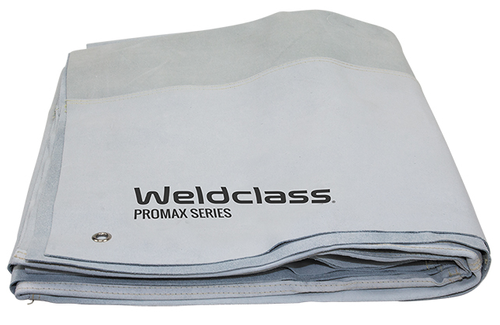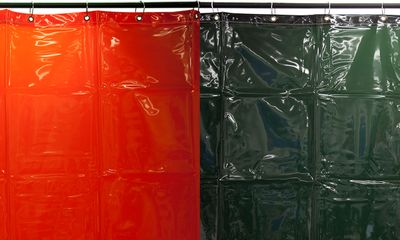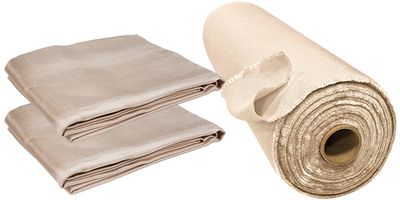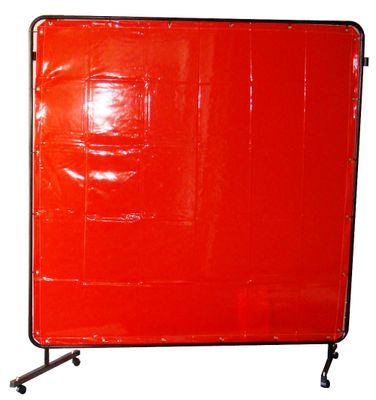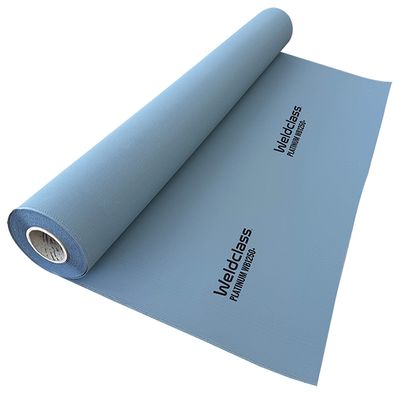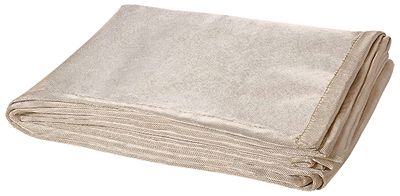Welding Blankets PROMAX Leather
Blanket Selection Chart Blanket Range Pdf
KEY FEATURES:
- Heavy Duty Split Cowhide Leather
- Sewn with Heat-Resistant Kevlar Thread, for resistance to seam failure
- With eyelets (see details below)
APPLICATION INFO:
- For protection against grinding sparks, light to medium spatter, indirect heat
- NOT recommended for protection against slag or molten droplets or direct flame
SPECIFICATIONS
- Temperature Resistance: Up to 200°c short duration (see more info below)
- Nominal Thickness: 1.2mm
- Nominal Weight: 900-1,100g/m2
- Stitching: Heat-resistance Kevlar
- Colour: Chrome / grey
- Material: Cowhide split leather
EYELET SPACING:
- On each corner & every 900/1,000mm
- 1x2m: Does not have eyelets
- 1.8x1.8m & 2x2m = Total 8 eyelets
- 3x3m = Total 12 eyelets
INSTRUCTIONS FOR USE
- If protecting critical or costly surfaces / items, allways use more layers initially, and test on a non-critical surface first
- When using for surface protection: If possible use on an incline of at least 15 degrees, or when neccessary to use in horizontal position add more layers
- Where the blanket is in closer proximity to the source of sparks etc, consider adding more layers of blanket/fabric as the sparks/spatter will have less time to cool and will be at a higher temperature at the point of touching/impact with the blanket
- Use hand, eye and respiratory protection during handling and use, to protect against airborn fibres and any dust/debris that has fallen on the blanket during use
- While leather blankets will withstand up to 200°c, a safety margin should always be allowed for, especially in critical applications. Consider using WB550, WB1000, WB1100, or WB1250+ blankets for more demanding applications
- Worn or damaged blankets will compromise protection and should be replaced
TEMPERATURE RESISTANCE OF COWHIDE LEATHER
Cowhide split leather fibre will typically withstand up to 200°c short term exposure and 80°c continuous exposure. Note that leather is typically higher in density and homogeneity when compared to woven fabrics (such as fibreglass or silica), increasing durability and resistance to penetration by sparks etc . Whilst the outer leather fibres in direct contact with a hot spark/particle may char or burn, the highly compact leather fibres resist further penetration allowing the partical to cool before it can fully penetrate the blanket. For this reason, leather blankets are a popular choice for light to medium welding applications where sparks and spatter will typically cool rapidly before and after contact with the blanket.
*As applications and usage conditions vary widely, no warranty or fitness for use in any specific application is implied or intended. In critical applications, blankets should always be tested/trialed to determined if they offer adequate protection. Being a natural product, leather properties will vary and this information is indicative only. E.&O.E.
How likely would you be to recommend this product to a friend? (10 = very likely) = 10 Comments: very good welding blanket.
04/03/22 7:17 PM
Tom - SA
How likely would you be to recommend this product to a friend? (10 = very likely) = 10 Comments: Good quality welding blanket. Does what it’s supposed to do.
01/03/22 4:03 PM


